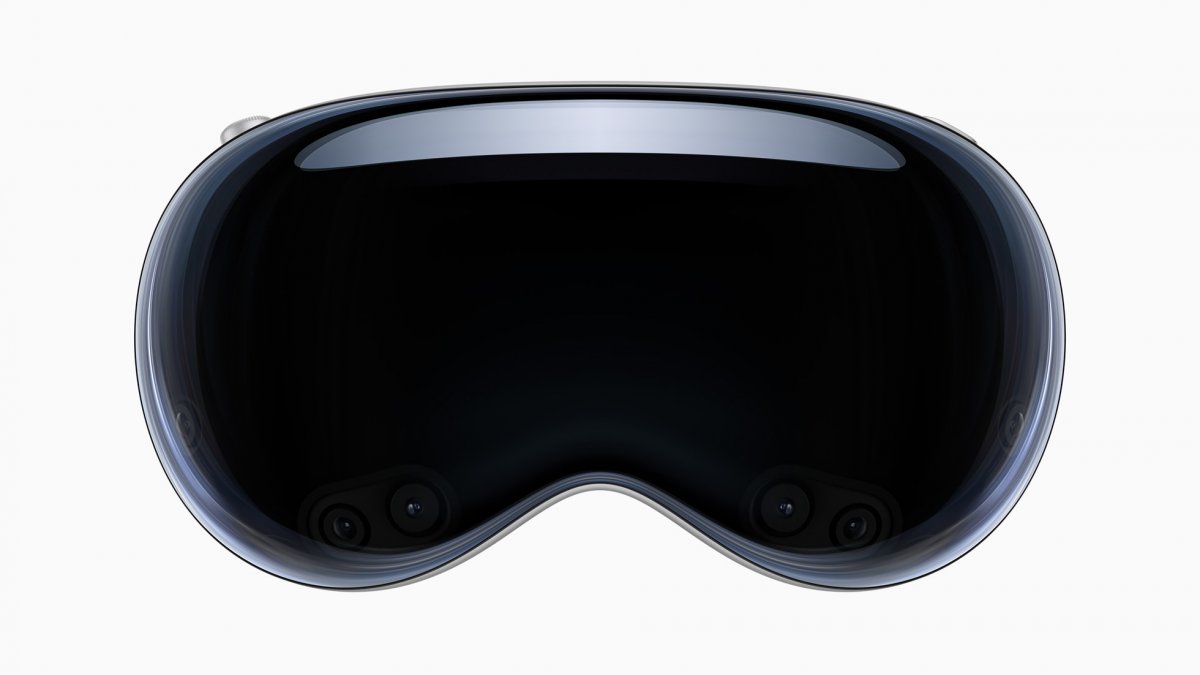At this year’s WWDC 2023 (World Wide Developer Conference) from Apple, Tim Cook presented the “legendary” Vision Pro glasses for years. There are many videos on YouTube, which is why this short article does not repeat the findings there.

Prof. Dr. Michael Stal has been with Siemens Technology since 1991. His research focuses on software architectures for large complex systems (distributed systems, cloud computing, IIoT), embedded systems, and artificial intelligence. He advises business units on software architecture issues and is responsible for the architecture training of senior software architects at Siemens.
First of all: this is not primarily about Apple and its latest product, but about considering the underlying concept and its possible areas of application.
But there still has to be some context: In any case, thanks to many sensors and cameras and a resolution of 4K for the two screens, the Vision Pro should offer an augmented reality of the future. Apple deliberately calls this spatial computing (spatial processing) instead of resorting to overloaded terminology such as AR (augmented reality) or MR (mixed reality). In this way, virtual backgrounds or environments can be integrated in real space, in the context of which users can design their work or entertainment environment. The degree of virtuality can therefore be controlled according to one’s own taste.
With an estimated price of 3500 US dollars, the new gadget is not exactly a bargain. But what many overlook: Apple doesn’t see itself as competing with giants like Meta and their Oculus product family, but rather addresses the market segment that also covers Microsoft’s $3,200 HoloLens. And these are more business users and maybe a few technology junkies with big savings. So the glasses are not a toy for gamers. It is therefore to be expected that apps for the Vision Pro will also address this market segment and not necessarily be found in the lower price segment.
Glasses for industrial applications
According to the author, the product could be interesting for business and industrial environments. The concept opens up the following domains and use cases:
- Maintenance scenarios: Here, maintenance specialists use the glasses to display internal details of the components currently being viewed in the factory or plant in the glasses or to get general help for maintenance.
- Medical devices: In addition to maintenance scenarios for modalities or for laboratory diagnostics, doctors could use the glasses for diagnostics, for example in connection with an image archiving system.
- Navigation and logistics applications: The use of the Vision Pro would be conceivable for mobile maintenance experts and warehouse employees to be guided to the right places.
- Operating and monitoring: In industrial automation, a concept that enables operating or monitoring of individual PLCs (programmable logic controllers), SCADA systems and other systems would be worth considering.
- Creativity: A Vision Pro could be used to design new circuits, architectures, and artificial artifacts that users could work on virtually without much distraction.
- Military: There is no question that the Vision Pro could be used for military purposes, for example to display important information in the field.
The mobility of the glasses in particular proves to be an advantage in these scenarios, apart from the significant disadvantage that the separately available high-performance battery lasts just two hours. Of course, all of this is just the tip of the iceberg. Since no one has tested the Vision Pro in the field, there is plenty of room for pure speculation. Interested development companies and users should still think about possible applications now.
Of course, all of this inevitably leads to considerations regarding the software and system architecture of the corresponding systems and applications. The combination with AI in a spatial computing application could also make sense, for example for the visual assessment of possible causes of errors during system maintenance.
The Apple Vision Pro could therefore be established as an important part of new or changed fields of application. It remains to be seen whether the competition will or can do something to counter this. At least the concept should stimulate developers and users how they can use this type of product meaningfully and productively in their domains or for themselves. The future begins now.
(rme)
